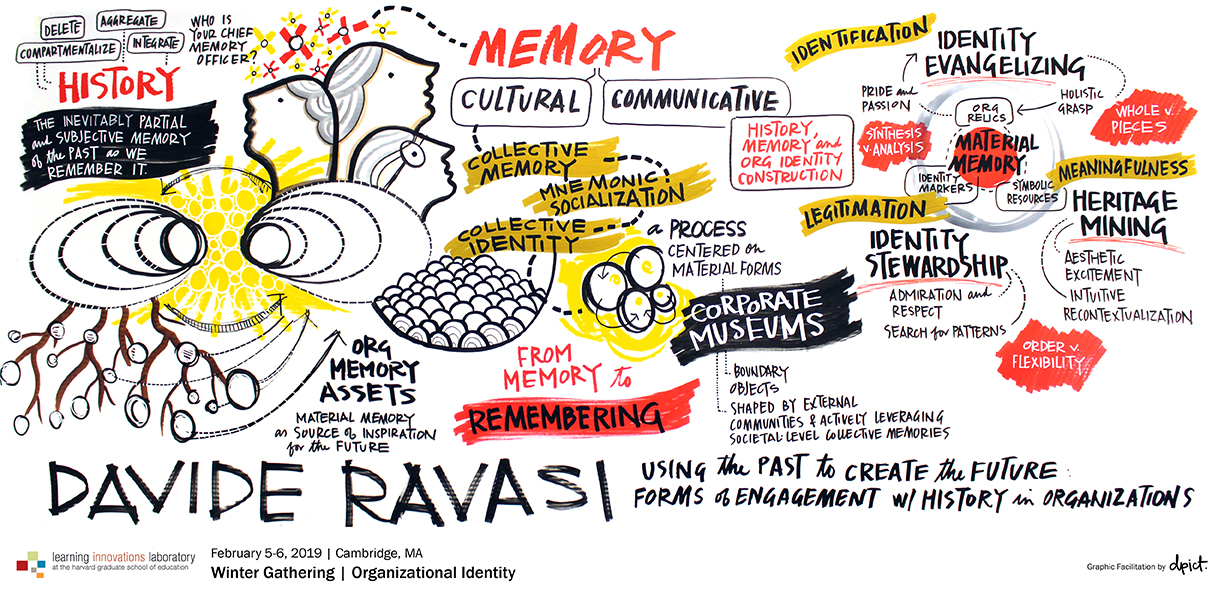How do organizations use their history to understand and reform identity to support transformation?
Radical change can often be destructive so it is interesting to note how organizations look back to their history to create continuity in org identity while changing.

Davide’s more recent research identifies the variety of historical mechanisms that organizations use to shape identity. One way is using collective memory – the shared memories of communities that get passed down, the rituals of remembrance, and symbolic objects and places to embody collective memory. For example, corporate museums are places that give quite a bit of evidence of how an org may be engaging in their history and identity. Davide studied a set of these museums in his research.
What were the variety of forms of engagement with history and memory in these museums? There were three different processes:
Identity Stewardship: who we are is answered by looking for connections to the past; looking for patterns and continuity; emotionality is admiration and awe;
Identity Evangelizing: who we are is answered by looking for distinctive features; looks to other groups and compares and creates pride and passion.
Heritage Mining: answers the question of who we are by looking back to find meaningfulness in past; creates aesthetic excitement and intuitive re-contextualization.
Some big takeaways are that objects and “material memory” are sources of inspiration for future-oriented activities for orgs. Organizational memory is not storied in “bins” is socially constructed using material memory. And this material memory can be boundary objects – shared with other stakeholders and communities to build shared understandings. As organizations become institutions, expectations of the org character increases and can constrain future action.
Some big questions for us to consider:
- How and what does our organization remember? What does or did it forget? Why?
- Where is material memory in our organization? Where are memory sites? Who values then? How? Why
- Who is in charge of remembering? Who is your “chief memory officer?”
- How is “who we are” now influenced by “who we have been” in the past? Should it be more? Less?
- How can you make better use of your history and memory to inspire future developments?
